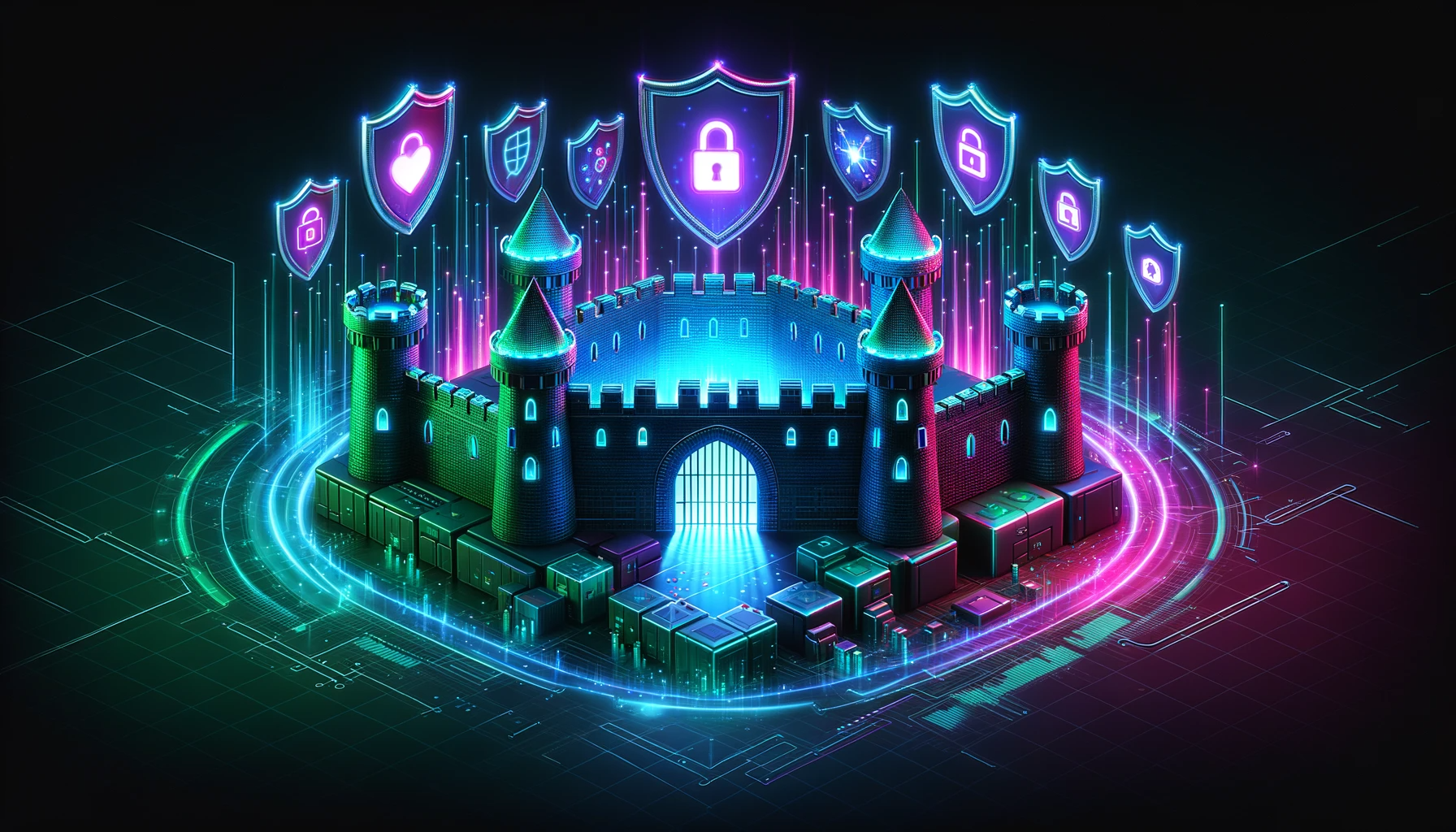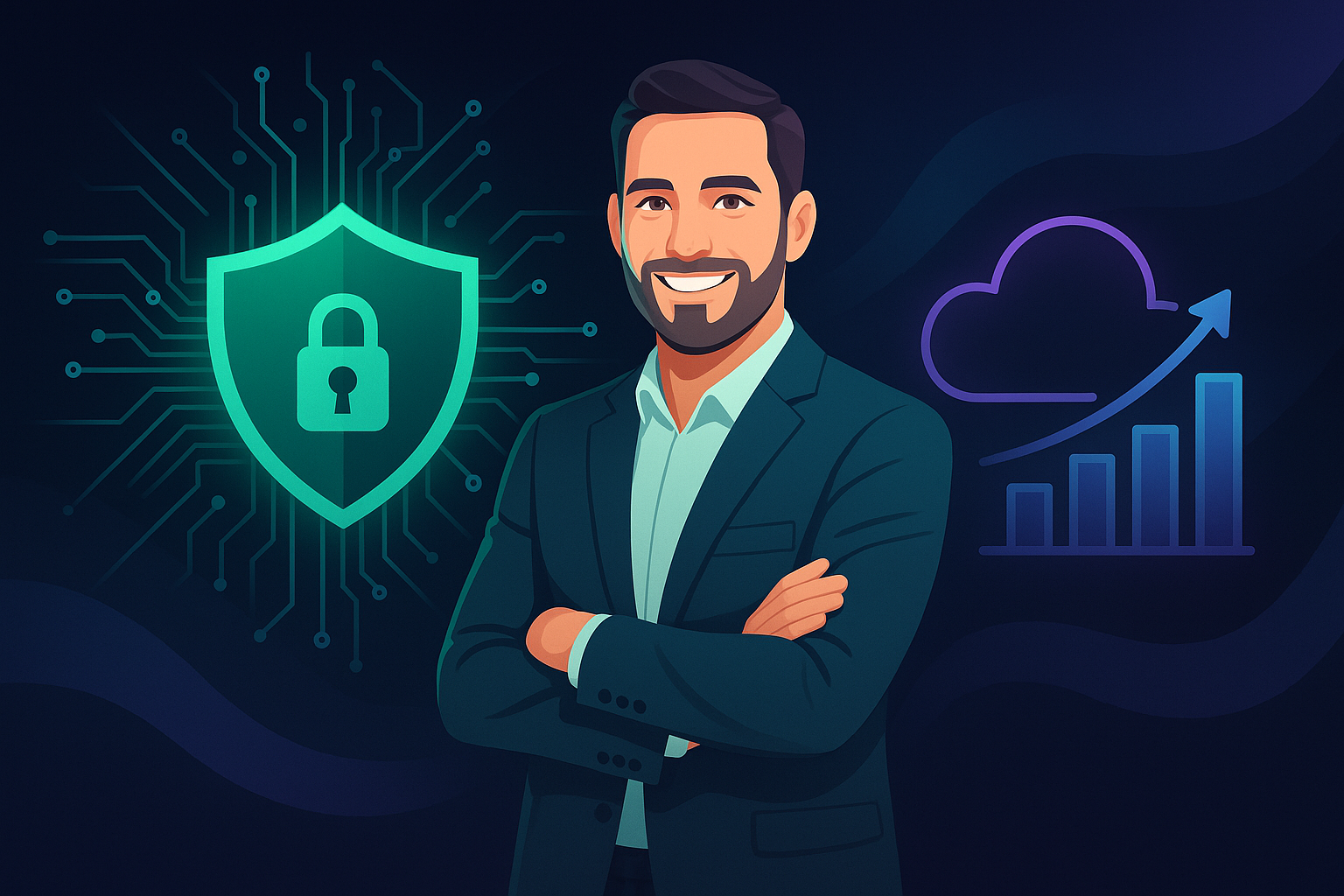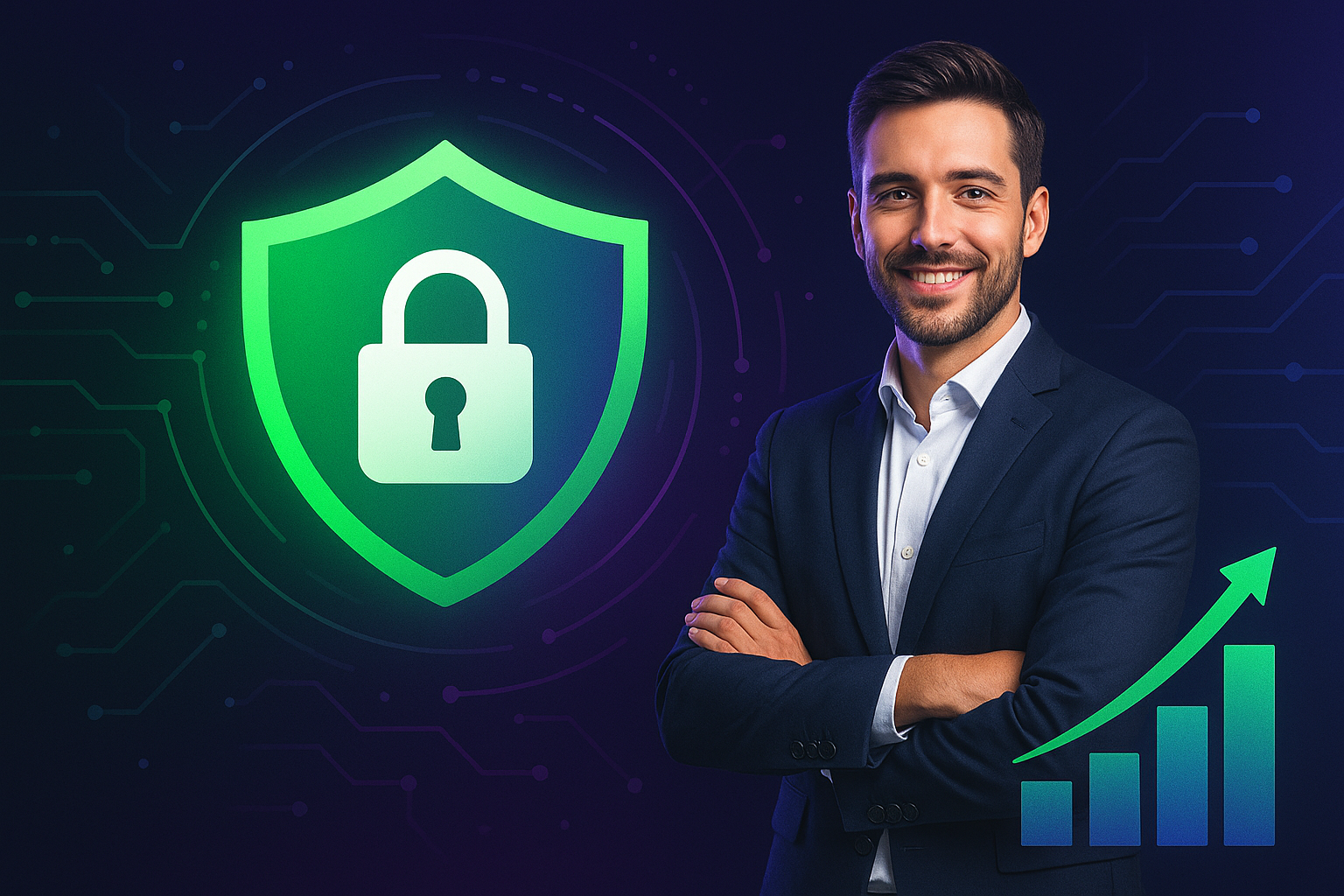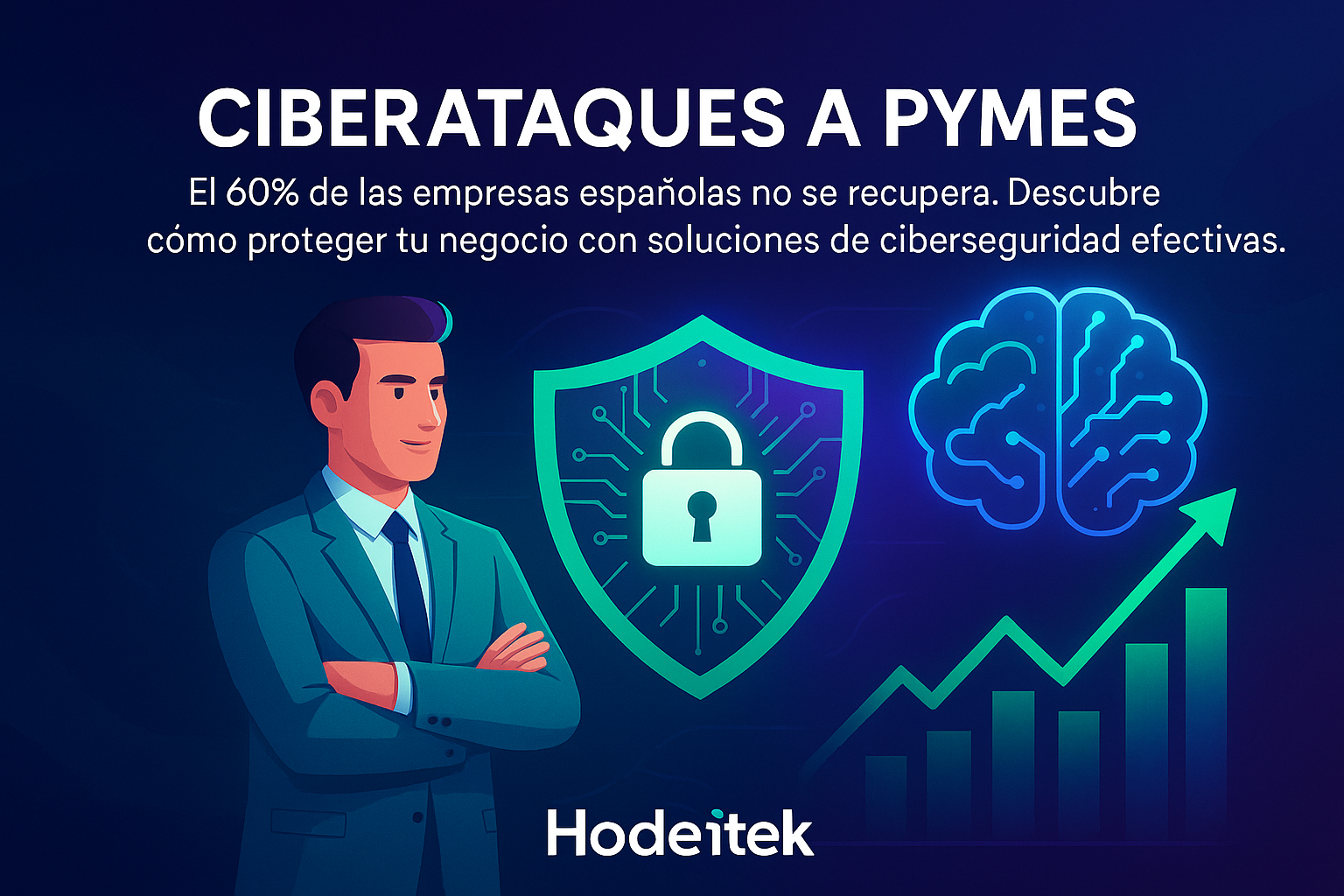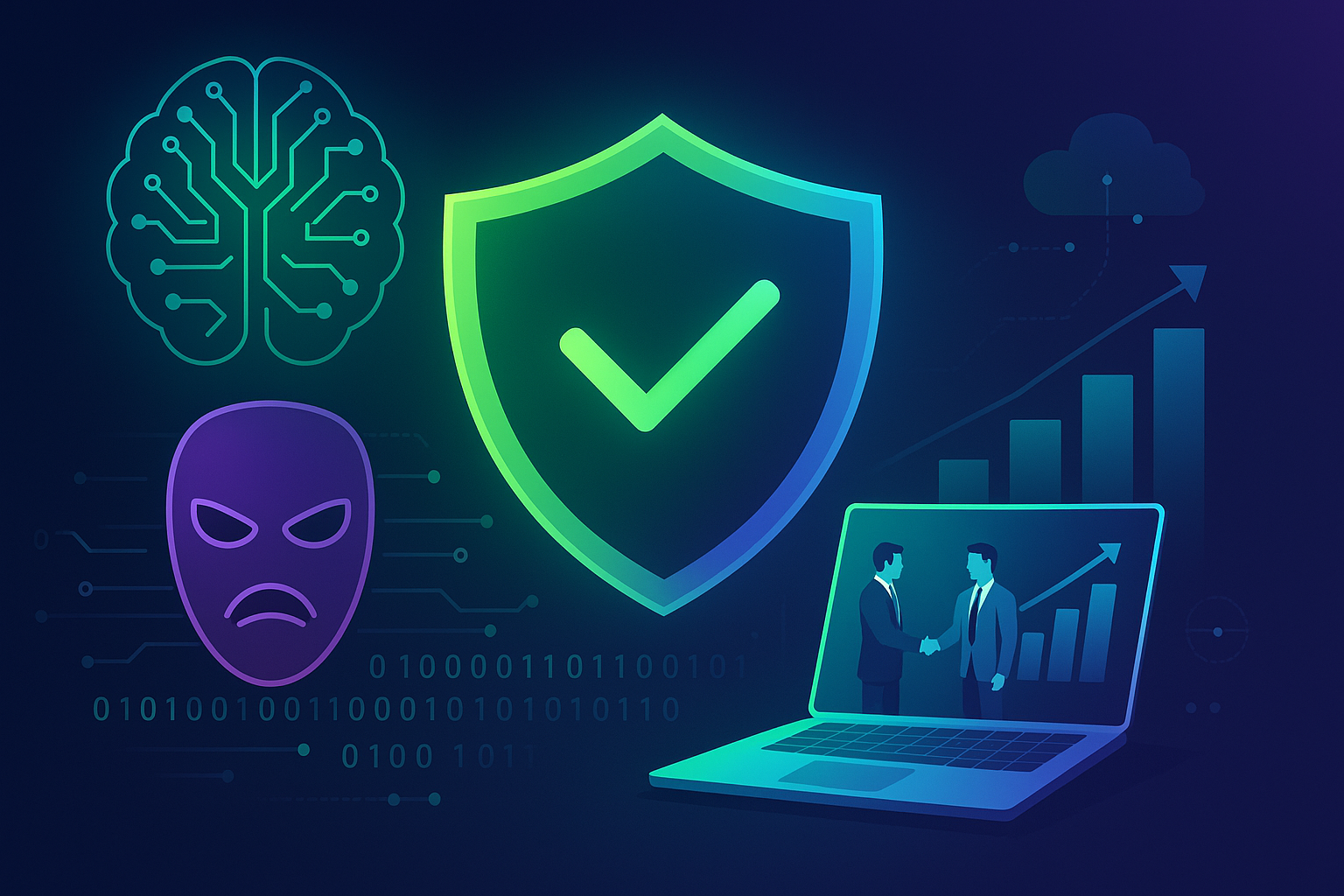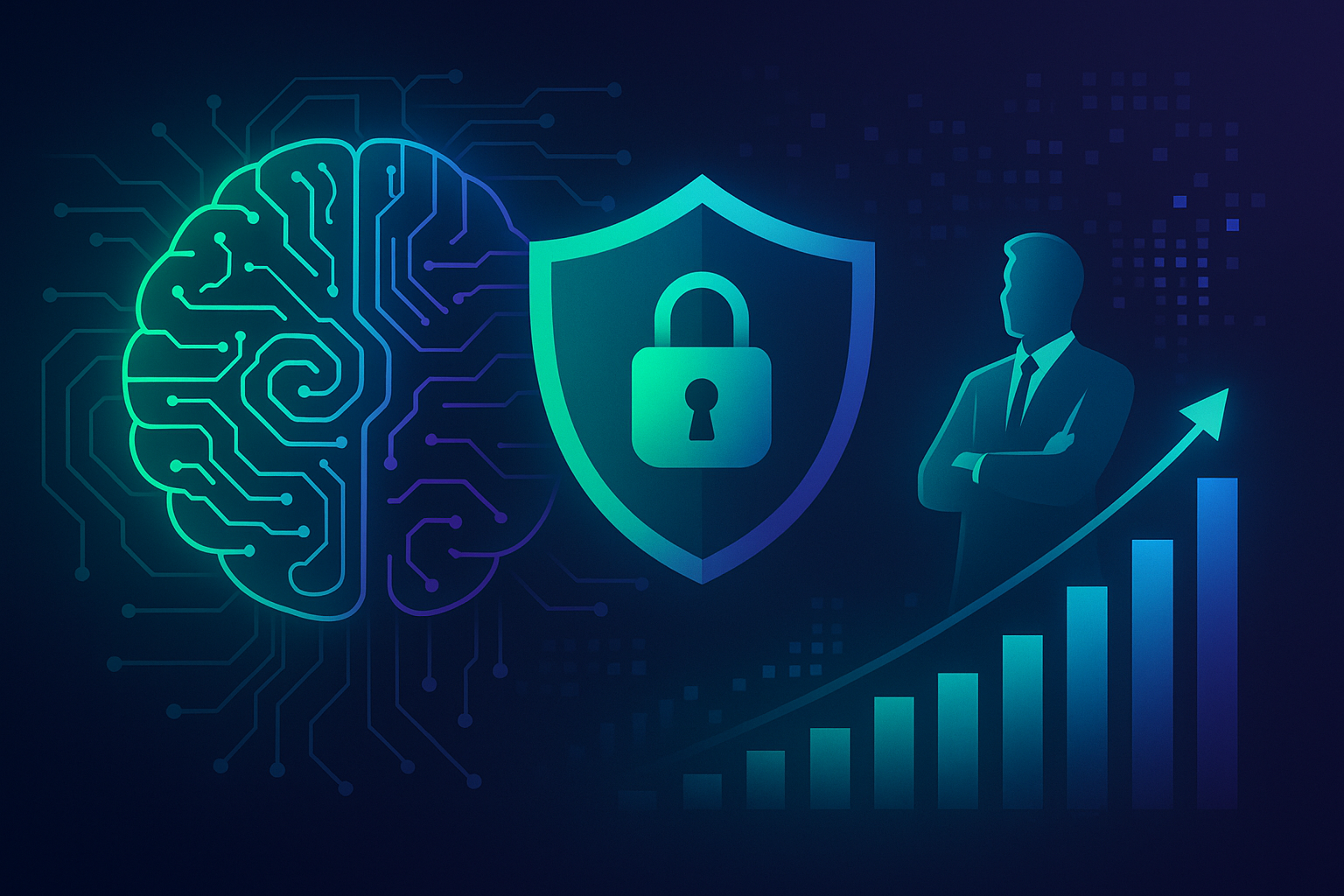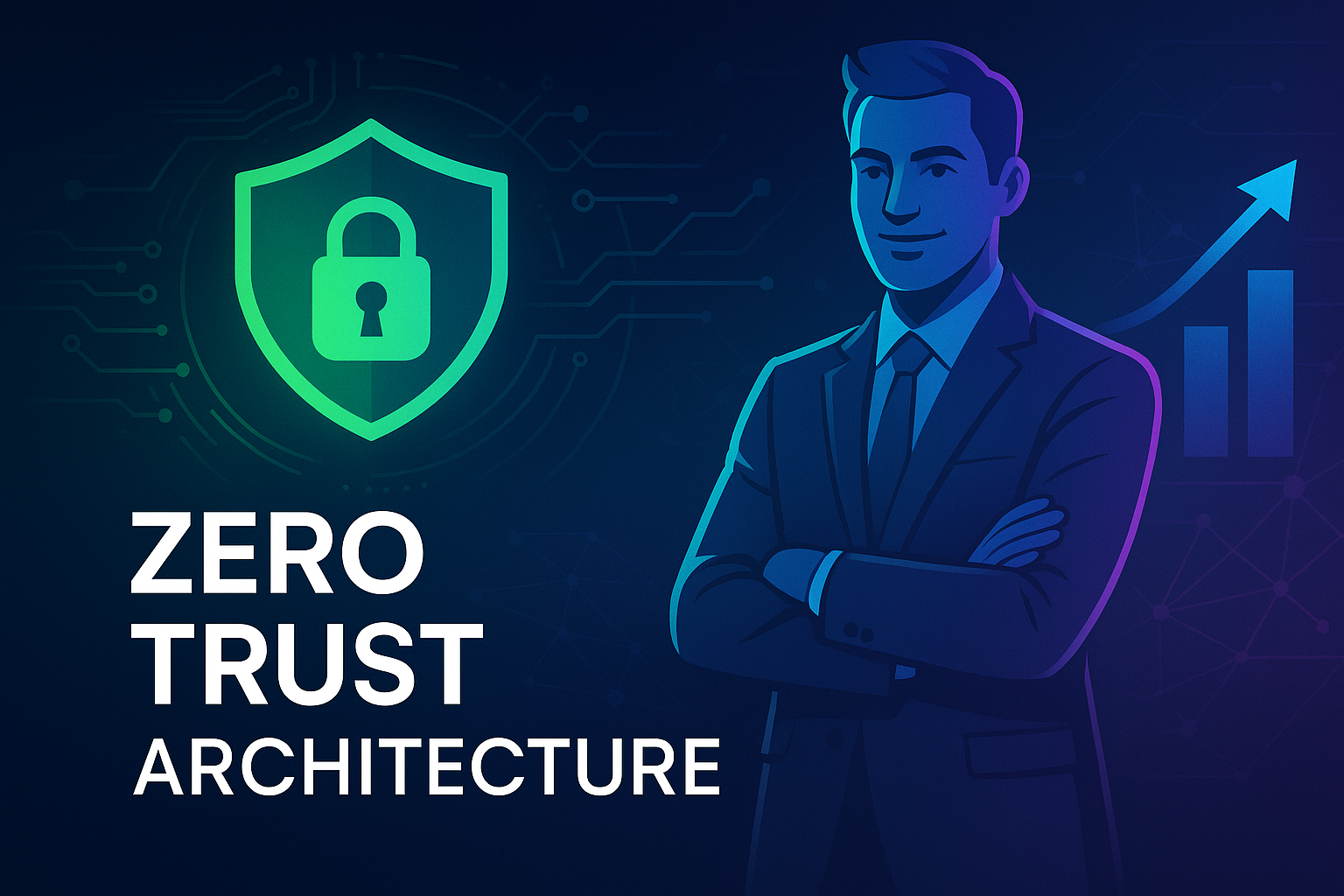What is Cybersecurity? An In-Depth Guide
In today’s hyperconnected world, technology touches almost every aspect of our lives. From managing personal finances to operating multinational corporations, the reliance on digital platforms has grown exponentially. However, with this increasing dependence comes the significant challenge of protecting these digital systems from malicious actors. Cybersecurity, therefore, has become not just a technical necessity but a fundamental priority for individuals, businesses, and governments alike.
So, what exactly is cybersecurity, and why is it so vital in our digital age? This guide will provide an in-depth look into the concept, its core elements, and its importance in safeguarding modern society and business operations.
Understanding Cybersecurity
Cybersecurity refers to the measures, technologies, and practices employed to protect systems, networks, programs, and data from cyber threats. These threats include unauthorized access, data breaches, ransomware attacks, and other malicious activities aimed at disrupting operations or stealing sensitive information. Cybersecurity encompasses a wide range of tools and techniques, from basic password protection to advanced artificial intelligence-driven threat detection systems.
The Increasing Relevance of Cybersecurity
The need for robust cybersecurity has skyrocketed in recent years, driven by the rapid pace of digital transformation. As businesses move to the cloud, adopt remote work models, and integrate Internet of Things (IoT) devices, the attack surface for cybercriminals has expanded significantly. Global internet traffic is expected to reach 400 exabytes per month by 2026, as reported by Cisco, underlining the sheer scale of digital interactions that require protection.
This evolution has made cybersecurity a critical component not only for IT departments but also for C-suite executives and policymakers. The stakes are high, with cyber incidents capable of crippling operations, tarnishing reputations, and incurring substantial financial losses.
Why is Cybersecurity Important?
The significance of cybersecurity extends beyond preventing financial losses. Its implications span across social, economic, and legal domains, underscoring its multifaceted importance:
1. Protecting Sensitive Data
At its core, cybersecurity aims to protect data from theft, alteration, or unauthorized access. Sensitive information—such as personal identification numbers (PINs), credit card details, health records, and trade secrets—is highly valuable to cybercriminals. For example, a breach in the healthcare sector can lead to the exposure of private patient data, violating privacy laws and eroding trust.
2. Ensuring Business Continuity
Cyberattacks can disrupt operations, leading to downtime that costs companies millions of dollars. According to IBM’s Cost of a Data Breach Report 2023, organizations with robust incident response plans and business continuity protocols were able to reduce downtime significantly, saving an average of $1.49 million per incident.
3. Maintaining Trust
In today’s competitive landscape, trust is a valuable currency. Customers, partners, and stakeholders expect organizations to handle their data responsibly. A high-profile data breach can erode this trust, leading to customer churn, legal liabilities, and reputational damage. For instance, studies show that 81% of consumers will stop engaging with a brand online after a data breach.
4. Compliance with Legal and Regulatory Frameworks
Governments around the world have enacted stringent regulations to ensure cybersecurity compliance. In the European Union, the General Data Protection Regulation (GDPR) mandates businesses to implement data protection measures or face penalties of up to €20 million or 4% of annual global turnover. Similarly, the NIS Directive focuses on securing critical infrastructure, further emphasizing the importance of cybersecurity in the EU.
Failing to meet these regulations can result in significant fines, operational restrictions, and legal battles. Partnering with experts like Hodeitek’s Cybersecurity Services can help businesses navigate these complex requirements effectively.
The Broader Impact of Cybersecurity
Beyond individual organizations, cybersecurity is integral to national security and the global economy. Cyberattacks on critical infrastructure—such as power grids, transportation networks, and healthcare systems—can have catastrophic consequences. For instance, the 2021 ransomware attack on Colonial Pipeline in the United States disrupted fuel supplies and highlighted vulnerabilities in critical infrastructure.
At a societal level, cybersecurity also plays a role in preserving democratic processes. The threat of election interference, for example, underscores the need for secure communication and voting systems to protect the integrity of democratic institutions.
Ultimately, cybersecurity is about enabling a secure and resilient digital environment where innovation can thrive without the constant threat of compromise.
Core Components of Cybersecurity
Cybersecurity encompasses various specialized areas that work together to protect systems, data, and networks from a wide range of threats. Each of these components is critical in establishing a holistic defense strategy. Below, we explore the core components of cybersecurity in greater detail, highlighting their importance and how they contribute to a secure digital environment.
1. Network Security
Network security is the foundation of any cybersecurity strategy. It focuses on protecting the underlying infrastructure of a business’s IT systems, including routers, servers, and connected devices, to ensure data transmission remains secure. Key technologies and strategies used in network security include:
- Firewalls: These act as barriers between trusted internal networks and untrusted external networks, filtering traffic based on predefined rules.
- Intrusion Detection and Prevention Systems (IDPS): These monitor network traffic for unusual patterns and block potential threats in real-time.
- Virtual Private Networks (VPNs): VPNs create encrypted connections between users and networks, ensuring secure remote access.
- Segmentation: Dividing networks into smaller segments limits the spread of threats and makes monitoring easier.
By implementing robust network security measures, businesses can prevent unauthorized access and mitigate the risk of large-scale attacks such as distributed denial-of-service (DDoS) attacks.
2. Application Security
Application security addresses vulnerabilities in software applications, which are common targets for hackers. Poorly designed or outdated applications can expose sensitive data or provide a backdoor for attackers. Application security practices include:
- Secure Development Lifecycle (SDLC): Integrating security checks throughout the development process ensures vulnerabilities are addressed before deployment.
- Regular Updates and Patches: Keeping applications updated prevents exploitation of known vulnerabilities.
- Code Reviews: Manual or automated reviews of application code can identify and fix weaknesses.
- Web Application Firewalls (WAFs): These protect web applications by filtering and monitoring HTTP traffic to block malicious inputs such as SQL injections or cross-site scripting (XSS).
Application security is particularly important in the era of mobile apps and Software-as-a-Service (SaaS) platforms, where software is frequently updated and accessed by a wide range of users.
3. Endpoint Security
Endpoint security focuses on protecting individual devices such as laptops, desktops, smartphones, and IoT devices. These endpoints are often the weakest links in an organization’s security chain, especially with the rise of remote work and bring-your-own-device (BYOD) policies. Effective endpoint security involves:
- Antivirus and Antimalware Software: These detect and remove malicious programs.
- Endpoint Detection and Response (EDR): EDR solutions provide advanced threat detection and remediation capabilities.
- Device Encryption: Encrypting data stored on endpoints ensures it remains secure even if the device is lost or stolen.
- Mobile Device Management (MDM): MDM tools help manage and secure mobile devices by enforcing security policies and remotely wiping data if necessary.
Endpoint security is a critical layer of defense, ensuring that users’ devices do not become entry points for attackers.
4. Cloud Security
Cloud security is essential as businesses increasingly migrate to cloud-based environments for storage and operations. While cloud platforms offer flexibility and scalability, they also introduce unique security challenges. Key cloud security practices include:
- Data Encryption: Ensures that data is secure both in transit and at rest.
- Access Controls: Cloud platforms use role-based access controls (RBAC) to limit access based on user roles.
- Cloud Security Posture Management (CSPM): CSPM tools identify and remediate security risks in cloud configurations.
- Shared Responsibility Models: Understanding the division of security responsibilities between the cloud provider and the customer is crucial.
Strong cloud security measures are critical for preventing data breaches and ensuring compliance with regulations like GDPR and CCPA.
5. Identity and Access Management (IAM)
Identity and Access Management focuses on ensuring that only authorized individuals or systems can access specific resources. IAM systems reduce the risk of unauthorized access and insider threats through:
- Multi-Factor Authentication (MFA): Adds an extra layer of security by requiring two or more verification methods.
- Single Sign-On (SSO): Allows users to access multiple applications with one set of credentials, improving convenience without compromising security.
- Privileged Access Management (PAM): Restricts and monitors access to sensitive systems by users with elevated privileges.
- Biometric Authentication: Uses fingerprints, facial recognition, or other biometric data to verify identity.
IAM systems are critical for preventing unauthorized access to sensitive systems and ensuring accountability through activity logs and monitoring.
6. Data Security
Data security focuses on protecting the integrity and confidentiality of data throughout its lifecycle. With the explosion of big data and analytics, protecting data has become more challenging but equally essential. Key data security practices include:
- Encryption: Ensures that data remains secure, even if intercepted.
- Data Masking: Replaces sensitive data with anonymized values for use in testing or development environments.
- Regular Backups: Ensures data recovery in case of accidental loss or a ransomware attack.
- Data Loss Prevention (DLP): DLP solutions monitor and control data transfer to prevent accidental or malicious data leakage.
By implementing strong data security practices, organizations can build trust with customers and partners while ensuring compliance with regulatory requirements.
Each of these components plays a critical role in an organization’s overall cybersecurity strategy. At Hodeitek, we specialize in integrating these components into comprehensive solutions tailored to your business needs.
Common Cyber Threats
Understanding the different types of cyber threats is essential for building a strong defense against them. Cybercriminals use a wide array of techniques to exploit vulnerabilities in systems, networks, and users. Below, we dive deeper into some of the most prevalent threats, explaining their mechanisms and impact.
1. Malware
Malware, short for malicious software, is a broad category encompassing various harmful programs designed to infiltrate, damage, or exploit systems. Malware can take several forms, including:
- Viruses: Malicious code that attaches itself to legitimate software or files and spreads when executed.
- Worms: Self-replicating programs that spread across networks without requiring user interaction.
- Ransomware: A type of malware that encrypts a victim’s data and demands payment for its release. Notable examples include the WannaCry and REvil ransomware attacks.
- Spyware: Software designed to secretly gather user information, such as keystrokes or browsing history, often for fraudulent purposes.
Malware is frequently distributed through phishing emails, malicious downloads, or compromised websites. Its impact can range from minor system disruptions to significant financial and reputational damage.
2. Phishing
Phishing is one of the most common and effective forms of cyberattacks, relying on social engineering to deceive users. Attackers impersonate trusted entities, such as banks or employers, to lure victims into revealing sensitive information like passwords, credit card details, or social security numbers.
Phishing comes in several variations, including:
- Email Phishing: Fraudulent emails containing links to fake websites or malicious attachments.
- Spear Phishing: Highly targeted phishing campaigns aimed at specific individuals or organizations.
- Smishing and Vishing: Phishing attempts conducted via SMS (smishing) or voice calls (vishing).
According to Verizon’s Data Breach Investigations Report, phishing is responsible for more than 80% of reported cyber incidents. Implementing email filters, employee training, and multi-factor authentication can help mitigate these risks.
3. Denial-of-Service (DoS) and Distributed Denial-of-Service (DDoS) Attacks
DoS attacks aim to disrupt services by overwhelming systems with excessive traffic, rendering them inaccessible to legitimate users. A more advanced version, the Distributed Denial-of-Service (DDoS) attack, involves multiple systems (often part of a botnet) attacking a single target simultaneously.
The consequences of DDoS attacks include:
- Downtime for websites, leading to revenue loss for businesses.
- Strained network resources, affecting operational efficiency.
- Potential reputational damage due to prolonged unavailability.
To counter these attacks, businesses use mitigation strategies such as traffic filtering, load balancing, and employing specialized DDoS protection services.
4. Man-in-the-Middle (MITM) Attacks
Man-in-the-Middle (MITM) attacks occur when a hacker intercepts communication between two parties without their knowledge. This allows attackers to eavesdrop, modify, or steal sensitive data. Common scenarios for MITM attacks include:
- Public Wi-Fi Interception: Attackers exploit unsecured public Wi-Fi networks to intercept data transmission.
- Session Hijacking: Stealing session cookies to impersonate a user and gain unauthorized access to web applications.
- HTTPS Spoofing: Creating fake HTTPS websites to trick users into entering sensitive data.
Implementing end-to-end encryption, avoiding public Wi-Fi for sensitive activities, and using VPNs are effective ways to prevent MITM attacks.
5. Advanced Persistent Threats (APTs)
Advanced Persistent Threats (APTs) are highly sophisticated, targeted attacks typically orchestrated by well-funded entities, such as nation-states or organized cybercriminal groups. APTs often target large organizations, critical infrastructure, or government entities with the goal of stealing sensitive information over an extended period.
Characteristics of APTs include:
- Stealth: Attackers use advanced evasion techniques to remain undetected for long durations.
- Customization: Each attack is tailored to exploit specific vulnerabilities in the target’s infrastructure.
- Persistence: Attackers continuously adapt their strategies to bypass security measures.
Preventing APTs requires multi-layered security approaches, including endpoint protection, threat intelligence, and regular security audits.
Emerging Threats
In addition to these well-established threats, new attack vectors are constantly emerging, such as:
- IoT-based Attacks: Exploiting vulnerabilities in smart devices to infiltrate networks.
- Deepfake Technology: Using AI-generated fake media for social engineering or disinformation campaigns.
- Supply Chain Attacks: Targeting third-party vendors to compromise larger organizations.
Understanding these threats and their mechanisms is the first step toward defending against them. At Hodeitek, we specialize in providing comprehensive solutions to detect, prevent, and respond to a wide range of cyber threats, tailored to your organization’s specific needs.
Best Practices for Cybersecurity
Implementing strong cybersecurity practices is essential to protecting systems, data, and users from evolving cyber threats. By following these best practices, organizations and individuals can minimize vulnerabilities and build a resilient defense strategy against potential attacks. Below, we explore these best practices in greater detail.
1. Regularly Update Software and Systems
Keeping software, operating systems, and applications up to date is a fundamental step in securing your digital environment. Cybercriminals often exploit known vulnerabilities in outdated software to gain unauthorized access. Regular updates ensure:
- Patching of security flaws discovered in the software.
- Improved functionality and performance of systems.
- Reduced risk of zero-day vulnerabilities being exploited.
Enable automatic updates whenever possible, and prioritize patching critical systems to stay ahead of potential exploits.
2. Use Strong, Unique Passwords and Enable Multi-Factor Authentication (MFA)
Weak passwords remain one of the most exploited vulnerabilities in cyberattacks. To strengthen account security:
- Create strong passwords that include a mix of letters, numbers, and symbols.
- Use a password manager to generate and store unique passwords for every account.
- Enable Multi-Factor Authentication (MFA) to add an extra layer of security. This requires users to provide two or more verification factors, such as a password and a code sent to a mobile device.
MFA significantly reduces the likelihood of unauthorized access, even if a password is compromised.
3. Conduct Regular Security Awareness Training
Human error is one of the leading causes of cybersecurity breaches. Training employees on security best practices is essential to creating a culture of awareness. Effective training programs include:
- Identifying phishing emails and social engineering tactics.
- Understanding the importance of secure password practices.
- Encouraging reporting of suspicious activity to IT teams.
Regular refresher courses and simulated phishing exercises can reinforce these lessons and improve overall security posture.
4. Implement Robust Backup and Disaster Recovery Plans
Data backups and disaster recovery plans are critical for minimizing the impact of a cyberattack. Key steps include:
- Backing up data regularly and storing it in secure, offsite locations.
- Testing backup integrity to ensure data can be restored when needed.
- Developing and documenting a disaster recovery plan that outlines procedures for responding to different types of cyber incidents.
By having a reliable backup and recovery strategy, organizations can reduce downtime and data loss in the event of ransomware attacks or system failures.
5. Utilize Comprehensive Cybersecurity Services
Partnering with a trusted cybersecurity provider, such as Hodeitek, can significantly enhance your organization’s defenses. Professional services often include:
- Threat detection and response.
- Proactive vulnerability management.
- 24/7 monitoring and support.
By leveraging expertise and cutting-edge tools, organizations can focus on their core operations while ensuring their cybersecurity needs are met.
Cybersecurity in the European Union
The European Union (EU) has established some of the most stringent cybersecurity regulations in the world. Businesses operating in the EU must comply with frameworks such as:
1. NIS 2 Directive
The Network and Information Security (NIS) 2 Directive mandates organizations in critical sectors, such as healthcare and energy, to implement robust cybersecurity measures. Key requirements include risk assessments, incident reporting, and employee training.
2. General Data Protection Regulation (GDPR)
The GDPR is a landmark regulation focused on data privacy and protection. It requires businesses to:
- Secure personal data through encryption and pseudonymization.
- Promptly report data breaches to supervisory authorities.
- Ensure transparency in data processing activities.
Non-compliance with GDPR can result in fines of up to €20 million or 4% of global annual turnover, whichever is higher.
At Hodeitek, we offer tailored solutions to help businesses navigate these regulatory complexities and achieve compliance seamlessly.
Real-World Examples of Cybersecurity Incidents
Cyberattacks have affected organizations of all sizes, demonstrating the critical importance of cybersecurity. Here are notable examples:
1. Colonial Pipeline Ransomware Attack (2021)
A ransomware attack forced the shutdown of one of the largest fuel pipelines in the United States, leading to fuel shortages and significant economic disruption. The incident highlighted vulnerabilities in critical infrastructure and the rising threat of ransomware.
2. SolarWinds Supply Chain Attack (2020)
The SolarWinds attack compromised software used by thousands of organizations, including U.S. government agencies and global corporations. This sophisticated supply chain attack underscored the importance of securing third-party software dependencies.
3. Small Business Cyberattacks
According to a 2023 report, 43% of cyberattacks targeted small businesses. Many of these businesses lacked adequate defenses, making them easy targets for phishing, ransomware, and other threats. This demonstrates that cybersecurity is not just a concern for large enterprises.
Partner with Experts to Strengthen Your Cybersecurity
Cybersecurity is not a one-time effort—it requires continuous vigilance, adaptation, and expertise. By partnering with Hodeitek, organizations can build a robust defense strategy tailored to their unique needs. Our services include:
- Advanced threat detection and response capabilities.
- Proactive monitoring and regular security assessments.
- Incident response planning and execution.
Visit our contact page to learn more or schedule a consultation with our experts.
Conclusion
Cybersecurity is an indispensable aspect of modern life, protecting individuals and businesses from evolving digital threats. By implementing best practices, staying informed about emerging threats, and partnering with reliable experts, you can safeguard your digital assets and maintain trust with your customers and stakeholders.
Ready to elevate your cybersecurity strategy? Explore our cybersecurity services and take the first step toward a secure digital future.
